Ditapis dengan
E-book Eyewitness Companions: Astronomy
Showing you what others only tell you, this title helps you discover the history and origins of the universe and observe the stars and galaxies, with over 100 star charts and profiles of all 88 constellations. Including a month-by-month guide to highlights of the night sky, it is perfect for any enthusiast, and is the definitive visual guide to enjoying and appreciating astronomy.
- Edisi
- -
- ISBN/ISSN
- 9781405312912
- Deskripsi Fisik
- 301 pages, ilus.
- Judul Seri
- -
- No. Panggil
- 520 RID e
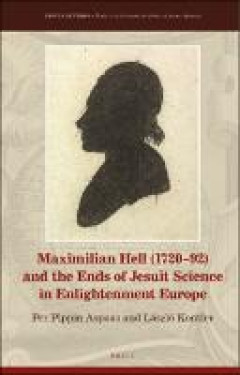
E-book Maximilian Hell (1720–92) and the Ends of Jesuit Science in Enlighte…
The Viennese Jesuit astronomer Maximilian Hell was a nodal figure in the eighteenth-century circulation of knowledge. This study of his career sheds light on the Enlightenment, Catholicism, reform in the Habsburg monarchy, and the cultivation of science in the Republic of Letters. Readership: Anyone interested in eighteenth-century Central Europe and Scandinavia, in the production and circulati…
- Edisi
- -
- ISBN/ISSN
- 490
- Deskripsi Fisik
- 490 halaman, ilus.
- Judul Seri
- -
- No. Panggil
- 215 ASP m
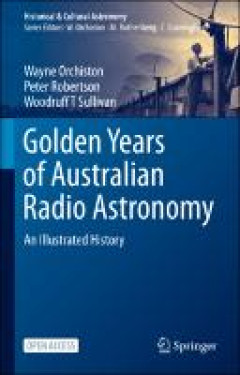
E-book Golden Years of Australian Radio Astronomy: An Illustrated History
The evolution of Australian radio astronomy from 1945 to 1960 has been studied in detail by numerous historians of science in recent years. This Open Access book is the first to present an overview of this remarkable chapter in Australian science. The book begins in the post-war period, as the Radiophysics Laboratory in Sydney switched from secret wartime research on radar to peacetime applicat…
- Edisi
- -
- ISBN/ISSN
- 9783319918433
- Deskripsi Fisik
- 268 halaman
- Judul Seri
- -
- No. Panggil
- 520.6 ORC g
E-book Big Ideas in Astronomy : A Proposed Definition of Astronomy Literacy
This is the motto of the International Astronomical Union (IAU) Office for Astronomy Outreach. If “All” is a very vast term to define society and its communities, “Astronomy” as a body of knowledge is also similarly vast. This project, “Big Ideas in Astronomy”, explores the issue: “What should science-educated citizens know about astronomy?” As a result of several discussion…
- Edisi
- -
- ISBN/ISSN
- 9789491760211
- Deskripsi Fisik
- 68 hlm
- Judul Seri
- -
- No. Panggil
- 520 RET b
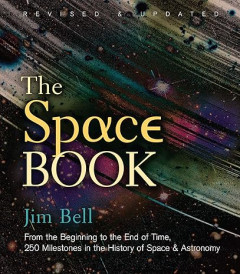
E-book The Space Book Revised and Updated: From the Beginning to the End of T…
Since the original edition of The Space Book was published in 2013, much has happened in the world of space exploration. This revised and updated edition, with a new introduction from author Jim Bell, brings the popular Milestones book up to date. It includes the most exciting and newsworthy breakthroughs, from the groundbreaking discovery of the Trappist-1 system to the technologies of the fut…
- Edisi
- -
- ISBN/ISSN
- 9781454935582
- Deskripsi Fisik
- 797 halaman, ilus.
- Judul Seri
- -
- No. Panggil
- 520 BEL t
E-book Making the Invisible Visible: A History of the Spitzer Infrared Telesc…
In the early 1970s, there was a small group of advocates for an infrared space telescope; however, the field of infrared astronomy was only a few years old, and no one had ever built a space-based observatory of the required complexity. Considering the technical, political, scientific, and economic uncertainties, it was not obvious that a project like SIRTF could—or should—be dared by NASA.…
- Edisi
- -
- ISBN/ISSN
- 9781626830363
- Deskripsi Fisik
- 212 halaman, ilus.
- Judul Seri
- -
- No. Panggil
- 522.2 ROT m
E-book Astronomy and Astrophysics in the New Millenium
In this new book, a distinguished panel makes recommendations for the nation's programs in astronomy and astrophysics, including a number of new initiatives for observing the universe. With the goal of optimum value, the recommendations address the role of federal research agencies, allocation of funding, training for scientists, competition and collaboration among space facilities, and much mo…
- Edisi
- -
- ISBN/ISSN
- 0309070376
- Deskripsi Fisik
- 401 halaman
- Judul Seri
- -
- No. Panggil
- 520 AST a
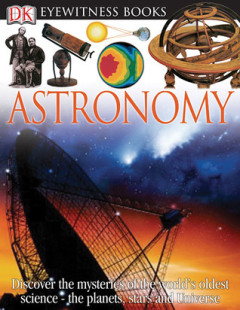
E-book Eyewitness: Astronomy
Looks at the history of astronomy, identifies important astronomers, and summarizes what is known about the Sun, Moon, planets, and stars.
- Edisi
- -
- ISBN/ISSN
- 9780756637675
- Deskripsi Fisik
- 76 halaman, ilus.
- Judul Seri
- -
- No. Panggil
- 520 LIP e

E-book Astronomy: A Visual Guide
This stunningly-illustrated space book is split into eight sections that cover every aspect of astronomy. Learn about the history of discoveries in the field and astronomical phenomena, from the earliest human civilizations to the present day, and then take a lavish visual tour of the Solar System, complete with the most spectacular photographs of the planets. A magnificent month-by-month g…
- Edisi
- -
- ISBN/ISSN
- 9780241317808
- Deskripsi Fisik
- 354 halaman, ilus.
- Judul Seri
- -
- No. Panggil
- 520 RID a
E-book A Researcher’s Guide to: Cellular Biology
The International Space Station offers a valuable platform and environment for cell biology investigations, novel discoveries and innovation in a microgravity environment. Areas of opportunity include tissue culture studies, tissue engineering research using 3-D tissue models, biopharmaceutical production, host microbe interactions, host-toxicology interactions, and host-drug sensitivity and re…
- Edisi
- -
- ISBN/ISSN
- -
- Deskripsi Fisik
- 50 halaman, ilus.
- Judul Seri
- -
- No. Panggil
- 520 NAS a
E-book A Researcher’s Guide to: Fruit Fly Research
For decades, researchers have used the fruit fly Drosophila to probe the combined effects of microgravity and other conditions of spaceflight with exposure to ionizing radiation. Drosophila melanogaster provides a well-characterized model organism that is both genetically complex and relatively modest in its habitat and life support requirements. Microgravity exposure, a unique biological chall…
- Edisi
- -
- ISBN/ISSN
- -
- Deskripsi Fisik
- 48 halaman, ilus.
- Judul Seri
- -
- No. Panggil
- 520 NAS a
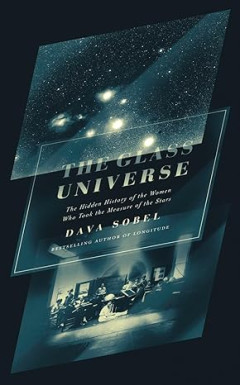
E-book The Glass Universe: The Hidden History of the Women Who Took the Measu…
- Edisi
- -
- ISBN/ISSN
- 9780007548194
- Deskripsi Fisik
- 400 halaman
- Judul Seri
- -
- No. Panggil
- 520 SOB t
- Edisi
- -
- ISBN/ISSN
- 9780007548194
- Deskripsi Fisik
- 400 halaman
- Judul Seri
- -
- No. Panggil
- 520 SOB t
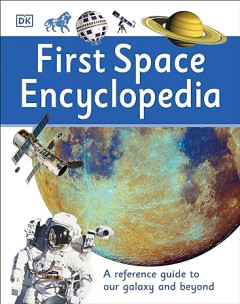
E-book First Space Encyclopedia
Reach for the stars in the updated First Space Encyclopedia! Explore the planets and discover amazing facts about nearby galaxies. A delightful first reference book about space for young astronomers, First Space Encyclopedia takes readers on a journey through the universe, from the beginning of space itself to current space technology. Find out what it takes to be an astronaut, what it is…
- Edisi
- -
- ISBN/ISSN
- 978024118743
- Deskripsi Fisik
- 138 halaman, ilus.
- Judul Seri
- -
- No. Panggil
- 523.112 NAN f
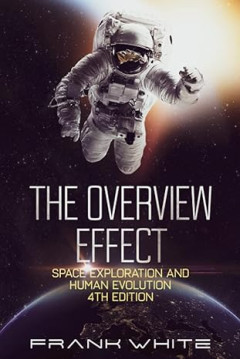
E-book The Overview Effect: Space Exploration and Human Evolution, 4rd Edition
More than three decades ago, Frank White coined the term “Overview Effect” to describe the cognitive shift that results from the experience of viewing the Earth from space and in space, from orbit or on a lunar mission. He found that with great consistency, this experience profoundly affects space travelers’ worldviews—their perceptions of themselves, our planet, and our understanding o…
- Edisi
- -
- ISBN/ISSN
- 9798735748458
- Deskripsi Fisik
- 618 halaman
- Judul Seri
- -
- No. Panggil
- 520 WHI t
E-book CAP Journal Issues 34 Special Edition II Celebrating 100 Years of the …
- Edisi
- -
- ISBN/ISSN
- -
- Deskripsi Fisik
- 44 halaman, ilus.
- Judul Seri
- -
- No. Panggil
- 520 IAU c
- Edisi
- -
- ISBN/ISSN
- -
- Deskripsi Fisik
- 44 halaman, ilus.
- Judul Seri
- -
- No. Panggil
- 520 IAU c
E-book Astronomy: A history of Man's Investigation of the Universe
Hoyle begins his story with accomplishments of the astronomers of the ancient world - the Babylonians, Mesopotamians, Egyptians, Greeks, and Romans - amd their attempts to measure distance between heavenly bodies and to find order in the bewilding motions of the planets. Hoyle then recreates the richly varied lives and works of Copernicus, Kepler, Brache, and Galileo, showing hoe their work set…
- Edisi
- -
- ISBN/ISSN
- -
- Deskripsi Fisik
- 328 halaman, ilus.
- Judul Seri
- -
- No. Panggil
- 520 HOY a
E-Book Astronomy Hours
- Edisi
- -
- ISBN/ISSN
- -
- Deskripsi Fisik
- 23 halaman. ilus.
- Judul Seri
- -
- No. Panggil
- 520 AFI a
- Edisi
- -
- ISBN/ISSN
- -
- Deskripsi Fisik
- 23 halaman. ilus.
- Judul Seri
- -
- No. Panggil
- 520 AFI a
E-Book CAP Journal Issues 33: Special Edition Celebrating 100 Years of The Pl…
- Edisi
- -
- ISBN/ISSN
- -
- Deskripsi Fisik
- 64 halaman, ilus.
- Judul Seri
- -
- No. Panggil
- 520 IAU c
- Edisi
- -
- ISBN/ISSN
- -
- Deskripsi Fisik
- 64 halaman, ilus.
- Judul Seri
- -
- No. Panggil
- 520 IAU c
E-Book CAP JOURNAL ISSUE 26: Spotlighting A Black Hole
- Edisi
- -
- ISBN/ISSN
- -
- Deskripsi Fisik
- 37 halaman
- Judul Seri
- -
- No. Panggil
- 520 CAP
- Edisi
- -
- ISBN/ISSN
- -
- Deskripsi Fisik
- 37 halaman
- Judul Seri
- -
- No. Panggil
- 520 CAP
E-book Fundamental Astronomy
During the rapid development of seafaring, when voyages extended farther and farther from home ports, position determination presented a problem for which astronomy offered a practical solution. Solving these problems of navigation were the most important tasks of astronomy in the 17th and 18th centuries, when the first precise tables on the movements of the planets and on other celestial pheno…
- Edisi
- -
- ISBN/ISSN
- 9783540341437
- Deskripsi Fisik
- 507 hlm
- Judul Seri
- -
- No. Panggil
- 520 KAR f
E-book Introduction to Astronomy and Cosmology
Astronomy is probably the oldest of all the sciences. It differs from virtually all other science disciplines in that it is not possible to carry out experimental tests in the laboratory. Instead, the astronomer can only observe what he sees in the Universe and see if his observations fi t the theories that have been put forward. Astronomers do, however, have one great advantage: in the Univers…
- Edisi
- -
- ISBN/ISSN
- 9780470033340
- Deskripsi Fisik
- 362 hlm
- Judul Seri
- -
- No. Panggil
- 520 MOR i
E-book Handbook of Space Astronomy and Astrophysics
This ebook contains space Astronomy and Astrophysics.
- Edisi
- -
- ISBN/ISSN
- 9780511348723
- Deskripsi Fisik
- 781 hlm
- Judul Seri
- -
- No. Panggil
- 520 ZOM h
 Karya Umum
Karya Umum  Filsafat
Filsafat  Agama
Agama  Ilmu-ilmu Sosial
Ilmu-ilmu Sosial  Bahasa
Bahasa  Ilmu-ilmu Murni
Ilmu-ilmu Murni  Ilmu-ilmu Terapan
Ilmu-ilmu Terapan  Kesenian, Hiburan, dan Olahraga
Kesenian, Hiburan, dan Olahraga  Kesusastraan
Kesusastraan  Geografi dan Sejarah
Geografi dan Sejarah